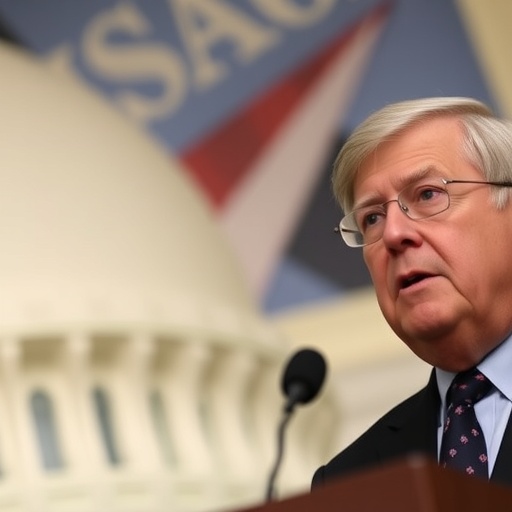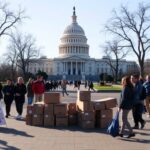U.S. Government Shutdown Persists: Treasury Secretary Bessent Urges Democrats to End Political Stalemate Amid Growing Economic Impact
In a dramatic escalation of the ongoing Government Shutdown, Treasury Secretary Scott Bessent issued a stark warning on Wednesday, calling on moderate Democrats to step in and break the political stalemate that’s paralyzing federal operations. As the shutdown enters its third week, hundreds of thousands of federal employees remain furloughed or working without pay, and the economic impact is rippling through markets, small businesses, and American households nationwide. With no end in sight, Bessent’s plea highlights the mounting pressure on lawmakers to resolve deep-seated partisan divides over budget priorities.
Treasury Secretary’s Direct Appeal Targets Moderate Democrats
Treasury Secretary Scott Bessent, a key figure in the Trump administration’s economic strategy, took to the podium at a press briefing in Washington D.C. yesterday, his voice laced with urgency. “The time for posturing is over,” Bessent declared. “Moderate Democrats in the House and Senate have the power—and the responsibility—to intervene and prevent this crisis from spiraling further. We’re not just talking about delayed checks; we’re facing a potential drag on GDP growth that could cost billions.”
Bessent’s comments come at a pivotal moment, as the shutdown—triggered by disagreements over immigration funding and border security—has stalled negotiations in Congress. Republicans, led by House Speaker Mike Johnson, insist on tying the budget bill to stricter border measures, while Democrats decry it as a non-starter. Bessent, known for his Wall Street background and pragmatic approach, specifically named Senators like Joe Manchin of West Virginia and Kyrsten Sinema of Arizona as potential bridges to compromise. “These voices of reason can tip the scales,” he added, emphasizing their history of bipartisan deals.
Behind the scenes, sources close to the Treasury Department reveal that Bessent has been in private communications with these moderates, sharing internal projections on the shutdown’s fiscal toll. One such projection, leaked to reporters, estimates daily losses exceeding $200 million in economic output, factoring in everything from unpaid federal salaries to halted infrastructure projects. This targeted appeal underscores the administration’s strategy to isolate hardline Democrats and appeal to the center, where polls show growing public frustration with the impasse.
Federal Workers Bear the Brunt as Paychecks Stall
For the 800,000 federal employees affected by the Government Shutdown, the human cost is impossible to ignore. From air traffic controllers at major airports to scientists at the National Institutes of Health, workers are either furloughed or reporting to duty without compensation. In a heartfelt interview with CNN, TSA officer Maria Gonzalez from Dulles International Airport shared her story: “I’ve got bills piling up—rent, groceries for my kids. This isn’t just politics; it’s my family’s livelihood on the line.”
Statistics paint a grim picture. The Office of Personnel Management reports that over 60% of affected workers are in essential roles, meaning they’re working through the uncertainty. Back pay is promised once the shutdown ends, but in the meantime, many are turning to food banks, credit cards, and even side gigs. In the Washington D.C. area alone, community organizations like the Capital Area Food Bank have seen a 40% surge in demand from federal families, according to executive director Nate Riggs.
The ripple effects extend beyond the Beltway. National Park Service employees, for instance, are watching iconic sites like Yosemite and the Grand Canyon operate with skeleton crews, leading to safety concerns and lost tourism revenue. A report from the U.S. Travel Association estimates that national parks could lose up to $76 million in visitor spending per week during the shutdown. Veterans Affairs staff, too, face delays in processing benefits, prompting outcry from groups like the American Legion, whose national commander called the situation “a betrayal of those who served.”
Lawmakers on both sides have acknowledged the strain. Democratic Senator Elizabeth Warren tweeted, “No one should have to choose between feeding their family and serving their country.” Yet, the political stalemate persists, with no emergency funding bill advancing as of press time.
Economic Ripples Threaten Broader Recovery
The economic impact of the Government Shutdown is not confined to federal payrolls; it’s sending shockwaves through the U.S. economy at large. Economists at Moody’s Analytics warn that if the shutdown extends beyond a month, it could shave 0.5 percentage points off GDP growth in the fourth quarter, potentially pushing the nation toward recession territory. Stock markets reacted sharply to Bessent’s comments, with the Dow Jones dropping 150 points in afternoon trading, reflecting investor anxiety over fiscal uncertainty.
Small businesses are feeling the pinch acutely. The National Federation of Independent Business (NFIB) surveyed its members and found that 25% of small firms with government contracts are facing cash flow crises, unable to pay suppliers or employees. In sectors like defense and IT, where federal dollars flow heavily, companies such as Lockheed Martin have halted non-essential projects, leading to layoffs. “We’re seeing a domino effect,” said NFIB CEO Jack Mozell in a statement. “One delayed payment can cascade into broader economic pain for communities reliant on these jobs.”
Consumer confidence is waning too. A fresh Gallup poll indicates that 55% of Americans view the shutdown as a “major” economic threat, up from 42% at the start. Retail sales in government-heavy regions like Virginia and Maryland dipped 3% last week, per preliminary Commerce Department data. Moreover, the partial halt to IRS operations means delayed tax refunds for millions, exacerbating household budgets amid inflation pressures.
Internationally, the shutdown is eroding U.S. credibility. Foreign investors, wary of prolonged instability, have pulled back from Treasury bonds, pushing yields up by 10 basis points. The Federal Reserve, in a rare interjection, noted in its latest minutes that the impasse could complicate monetary policy, forcing potential rate adjustments to offset the drag.
Flashpoints in the Partisan Budget Battle
At the heart of this political stalemate lies a contentious budget bill valued at $1.2 trillion, where immigration reform has become the flashpoint. Republicans demand $20 billion for border wall construction and enhanced enforcement, citing a surge in migrant crossings that hit record highs last fiscal year—over 2.4 million encounters, according to Customs and Border Protection data. President Trump reiterated this stance in a Fox News interview, stating, “We can’t secure our future without securing our borders. Democrats must come to the table.”
Democrats, however, view these demands as leverage tactics, prioritizing domestic spending on healthcare, education, and climate initiatives. House Minority Leader Hakeem Jeffries accused the GOP of “holding the economy hostage” over partisan priorities, pointing to a non-binding Senate vote last week that failed 52-48 along party lines. Bipartisan talks, mediated by the Problem Solvers Caucus, have yielded little progress, with sessions dissolving amid heated exchanges.
Historical context adds weight: This is the fourth shutdown in a decade, the longest since the 35-day impasse in 2018-2019. That event cost an estimated $11 billion in lost productivity, per the Congressional Budget Office. Analysts like those at the Bipartisan Policy Center suggest that underlying issues—rising national debt now at $35 trillion and polarized electorates—make resolution elusive. Public approval for Congress sits at a dismal 18%, per RealClearPolitics averages, fueling calls for electoral consequences in the 2026 midterms.
Key negotiators include Senate Majority Leader Chuck Schumer and GOP Whip John Thune, whose offices report daily huddles but no breakthroughs. Advocacy groups, from the Sierra Club decrying environmental project delays to the Chamber of Commerce lobbying for stability, are amplifying pressure through ads and rallies.
Pathways to Resolution and Lingering Risks
As the Government Shutdown grinds on, eyes are turning to potential off-ramps. One scenario involves a short-term continuing resolution (CR) to reopen the government while talks continue, a tactic used successfully in past crises. Bessent hinted at this in his briefing, noting the Treasury’s readiness to expedite payments upon resolution. Moderate Democrats, responding to Bessent’s call, have signaled openness; Senator Manchin told reporters, “I’m talking to folks on both sides—nobody wins if this drags into the holidays.”
Yet risks abound. If no deal emerges by month’s end, the shutdown could intersect with the debt ceiling deadline in early 2024, creating a dual crisis. The Treasury Department projects exhausting extraordinary measures by January, potentially leading to default—a catastrophe economists equate to the 2008 financial meltdown in severity. International bodies like the IMF have urged swift action, warning of global contagion.
Looking ahead, resolution could hinge on public pressure. Protests by federal workers are planned for this weekend in D.C., and corporate leaders, including CEOs from Apple and JPMorgan, have penned an open letter to Congress demanding compromise. For everyday Americans, the economic impact underscores the stakes: restored paychecks, revived projects, and market stability. As Bessent put it, “This isn’t inevitable—it’s a choice. Let’s choose progress over paralysis.” With negotiations resuming Friday, the nation holds its breath for signs of thaw in the political stalemate.
In the broader landscape, this episode serves as a stark reminder of governance fragility in a divided era. Policymakers must navigate not just immediate hurdles but long-term reforms to prevent future shutdowns, perhaps through balanced budget amendments or automatic CR mechanisms. Until then, the clock ticks, and the costs mount.








